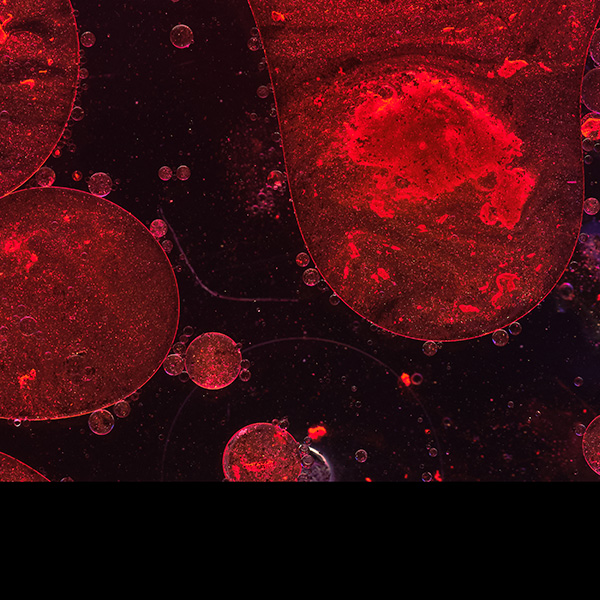Key Benefits
- Pinpoint your stage in the menopause transition using FSH, LH, estradiol, progesterone.
- Clarify whether symptoms reflect perimenopause versus thyroid, prolactin, or other conditions.
- Flag estrogen drops driving hot flashes, sleep changes, mood shifts, and vaginal dryness.
- Explain rising FSH/LH as ovaries slow, confirming reduced ovarian hormone production.
- Clarify ongoing ovulation with progesterone, informing contraception needs during perimenopause.
- Guide discussions on hormone therapy candidacy, timing, and monitoring during the transition.
- Protect bones and heart by identifying low estrogen needing lifestyle or medical support.
- Track trends over time, best interpreted with cycle timing, medications, and symptoms.
What are Menopause
Menopause biomarkers are measurable signals in blood that map the body’s transition from cyclical fertility to the non-reproductive state. As the egg supply shrinks (ovarian reserve), the ovaries make less estrogen and progesterone (estradiol, progesterone). The brain senses this weaker feedback and turns up its stimulators, especially the pituitary hormones that drive ovulation (follicle-stimulating hormone and luteinizing hormone—FSH, LH). Earlier in the transition, markers made by growing follicles decline (anti-Müllerian hormone and inhibin B—AMH, inhibin B), reflecting reduced follicle activity; later, the rise in FSH and fall in estradiol signal that ovulation is winding down. Testing this suite of markers shows how active the ovaries still are and where someone sits in the transition (perimenopause to postmenopause). Reading the pattern helps link symptoms like hot flashes, cycle changes, and sleep disturbance to a biological stage, distinguish menopause from look-alike conditions, and time decisions about contraception or menopausal care. In short, menopause biomarkers translate the brain-ovary conversation (hypothalamic-pituitary-ovarian axis) into objective clues about timing and trajectory.
Why are Menopause biomarkers important?
Menopause biomarkers—FSH, LH, estradiol, and progesterone—map how the brain and ovaries are talking to each other as ovarian function winds down. They reveal shifts that ripple across thermoregulation, sleep, mood, bone remodeling, cardiovascular risk, metabolism, and the urogenital tract, helping distinguish normal transition from other causes of symptoms.
In cycling adults, basal FSH tends to sit low–middle (about 3–10) with an ovulatory rise; LH is similar (about 2–12) with a midcycle surge; estradiol typically ranges roughly 20–300 across the cycle; progesterone is low outside the luteal phase and peaks around 5–20. “Optimal” in a regular cycle means basal FSH/LH on the low–middle end, estradiol in the middle with a clear midcycle rise, and progesterone mid–high in the luteal phase. After menopause, FSH commonly rises above 25–40 and LH is higher, while estradiol often falls below 20–30 and progesterone stays very low—reflecting ovarian retirement.
When these values are low, the meaning depends on which hormone. Low estradiol and progesterone drive classic vasomotor symptoms, poorer sleep, brain fog, vaginal dryness, joint aches, and accelerated bone turnover; periods become irregular, then cease. If FSH and LH are also low alongside low estradiol, that points to reduced pituitary drive (for example, hypothalamic suppression) rather than menopause. In women under 40, low estradiol with high FSH suggests premature ovarian insufficiency; after hysterectomy with ovaries intact, patterns still guide staging even without periods.
Big picture: these biomarkers anchor the physiology of the transition, linking brain–ovary feedback to bone density, lipid profiles, glucose handling, and genitourinary health. Tracked together, they help time the menopause stage, clarify symptom sources, and flag longer‑term risks such as osteoporosis and cardiometabolic change.
What Insights Will I Get?
Menopause biomarkers track how the hypothalamic–pituitary–ovarian axis winds down, with ripple effects on energy use, metabolic rate, cardiovascular and bone health, cognition and mood, thermoregulation, sleep, and immunity. At Superpower, we measure FSH, LH, estradiol, and progesterone to locate you on the reproductive aging continuum.
FSH and LH are pituitary signals that drive follicle growth and trigger ovulation. Estradiol, produced by developing follicles, supports metabolic, vascular, and neural systems. Progesterone, produced by the corpus luteum after ovulation, stabilizes the endometrium and modulates brain and immune tone. As follicles deplete, estradiol and progesterone fall, and the pituitary compensates by raising FSH (often LH).
Consistently high FSH with low estradiol indicates established ovarian insufficiency/menopause. Broad swings in FSH/LH with variable estradiol suggest perimenopause and parallel fluctuating symptoms. Detectable luteal progesterone confirms recent ovulation; persistently low progesterone indicates anovulatory, irregular cycles. In a stable premenopausal pattern, FSH is lower with a mid‑cycle LH surge, estradiol peaks before ovulation, and progesterone is robust mid‑luteal; loss of this coordination marks the transition’s completion.
Notes: Interpretation depends on age and cycle timing; pregnancy, lactation, acute illness, pituitary or thyroid disease, and ovarian surgery can shift values. Hormonal contraception or therapy, antiestrogens, and GnRH analogs alter feedback. Very low estradiol/progesterone require sensitive assays, and biotin can interfere. Single tests are snapshots; trends clarify stage.







.avif)



.svg)





.svg)


.svg)


.svg)

.avif)
.svg)










.avif)
.avif)
.avif)


.avif)
.png)


